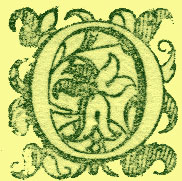
O is the fifteenth letter of the modern Latin alphabet. Its name in English (pronounced /oʊ/) is spelled o; the plural is oes, though this is rare.
The letter was derived from the Semitic `Ayin (eye), which represented a consonant, probably the voiced pharyngeal fricative (IPA: [ʕ]), the sound represented by the Arabic letter ع called `Ayn. This Semitic letter in its original form seems to have been inspired by a similar Egyptian hieroglyph for “eye”.
The Greeks are thought to have come up with the innovation of vowel characters, and lacking a pharyngeal consonant, employed this letter as the Greek O to represent the vowel /o/, a sound it maintained in Etruscan and Latin. In Greek, a variation of the form later came to distinguish this long sound (Omega, meaning “large O”) from the short o (Omicron, meaning “small o”).
Its graphic form has also remained fairly constant from Phoenician times until today. Indeed, even alphabets constructed “from scratch”, i.e. not derived from Semitic, usually have similar forms to represent this sound — for example the creators of theAfaka and Ol Chiki scripts, each invented in different parts of the world in the last century, both attributed their vowels for ‘O’ to the shape of the mouth when making this sound.
O is most commonly associated with the close-mid back rounded vowel [o] in many languages. This form is colloquially termed the “long o” in English, but it is actually a most often adiphthong /oʊ/ (realized dialectically anywhere from [o] to [əʊ]).
In English there is also a “short O”, which also has several pronunciations. In most dialects of English English, it is an open back rounded vowel [ɒ]; in North America, it is most commonly an unrounded back to central vowel [ɑː] to [a].
Common digraphs include OO, which represents either /ʊ/ or /uː/; OI which typically represents the diphthong /ɔɪ/; and OA, OE, and OU represent a variety of pronunciations depending on context and etymology.
Other languages use O for various values, usually back vowels which are at least partly open. Derived letters such as Ö and Ø have been created for the alphabets of some languages to distinguish values that were not present in Latin and Greek, particularly rounded front vowels.
In the International Phonetic Alphabet, [o] represents the close-mid back rounded vowel.
